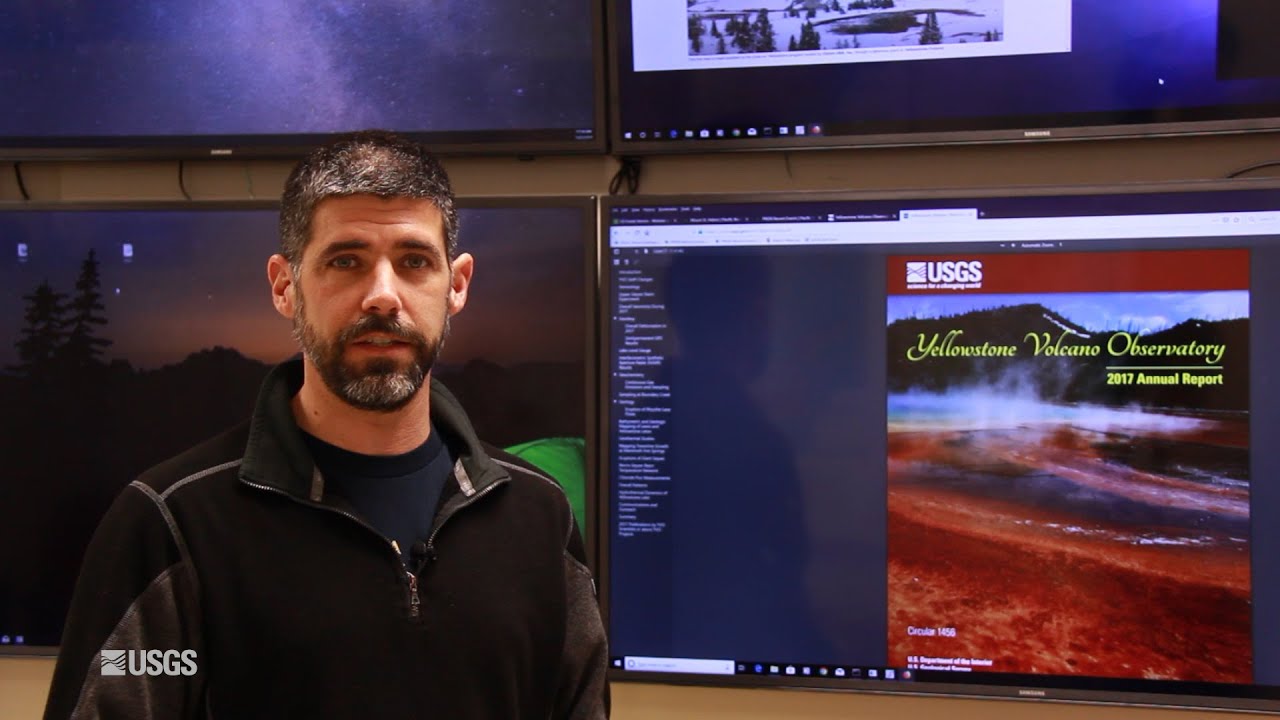Yellowstone Volcano Observatory Monthly Update: December 2, 2019
[Music] hi everybody I'm Mike Poland the scientist in charge of the Yellowstone Volcano Observatory and I'm here with the December update which we discussed the activity that occurred in the Yellowstone region over the past month before we dive into the data I wanted to show you a new product that why vo is introducing the annual report this particular one for 2017 it's meant to be a summary of all the sorts of things that happen in 2017 the kinds of activity we saw in terms of earthquakes and ground information and also some of the neat research that's going on for example in this report we discussed the Maple Creek earthquake swarm in which over 2400 earthquakes were located that was the second-longest swarm in terms of duration and the second largest in terms of total numbers of earthquakes we also show some thermal remote sensing data that indicate that the radiant output for heat from the Yellowstone region was 1.
3 gigawatts which if you're a fan of movies you know that's enough energy to send a DeLorean back in time so check out the Yellowstone annual report for 2017 we'll be introducing the 2018 report soon and as soon as the next year starts are going to be diving into summarizing the 2019 activity all right well let's check out earthquake deformation and geyser activity for the month of November during the month of November the University of Utah seismograph stations which is responsible for the operation and maintenance of the Yellowstone seismic Network located a hundred and seven earthquakes in the Yellowstone region the largest was this one right here is a magnitude 3.
1 that occurred outside the park in fact just west of Hebgen Lake there was also a very small swarm of earthquakes that began right at the end of November and continued into early December right here on the west edge of West Thumb the largest event of this sequence was a magnitude 2.
1 moving to deformation this is GPS deformation over the last two years on the sour Creek resurgent dome at Station White Lake down in this case downward trends mean subsidence and upward trends mean up loads so over the last two years there's this overall downward trend that suggests subsidence of the resurgent dome but some variability here in the last few months and this may be caused by seasonal variations especially due to some of the storms that have occurred in the region moving to the Mallard Lake dome and the old faithful site we see the same downward trend over time over the two years of this plot with some variations especially in the last few months so subsidence with a little bit of variability superimposed on the top if we move to the Norris Geyser Basin we can see that there was an upward trends there had been uplift gone going from 2015 in fact all the way until October of 2018 now that uplift paused in October of 2018 and stayed mostly steady with no upward down motion of any consequence until about September of 2019 that's when a small subsidence event occurred only about two centimeters that's less than an inch and then over the past month or so we've been again pretty steady so there hasn't been a whole lot of deformation at Norris even over the past year now finally moving to steamboat geyser we've had three eruptions of steamboat geyser in November this is the temperature record from the steamboat geyser area first eruption was on November 8th another was on November 17th and the third of the month was on November 27th and you can see from this record that prior to eruptions as a build-up a lot of minor activity a lot of variability and then right after the major eruption the temperatures fall that variability goes away because the minor eruptions stop and then we just see basically air temperature variations and over the last eruption here we caught that on the 27th of November but then since we've had an outage of that system so we'll have to troubleshoot that and see whether we can fix this so we can catch the next sequence of Steamboat eruptions well that's it for the December update thanks for joining us remember you can always reach us online at the Yellowstone Volcano Observatory website and if you have any questions feel free to write us at Y vo web team that's all one word at usgs.
gov thanks very much have a great December see you in the new year [Music].
